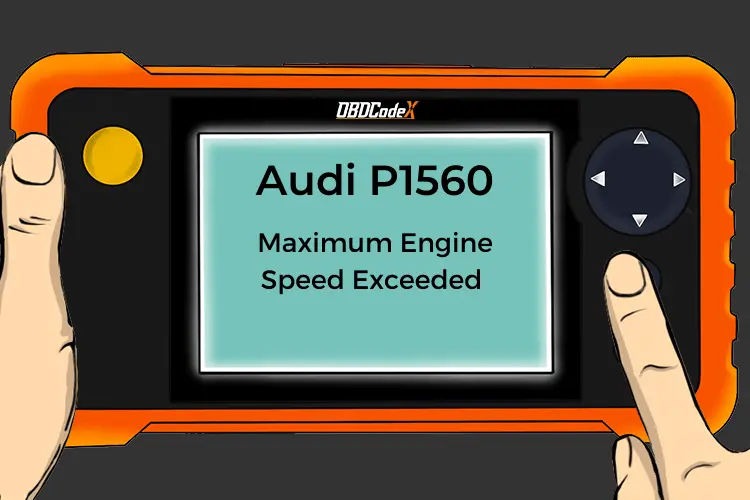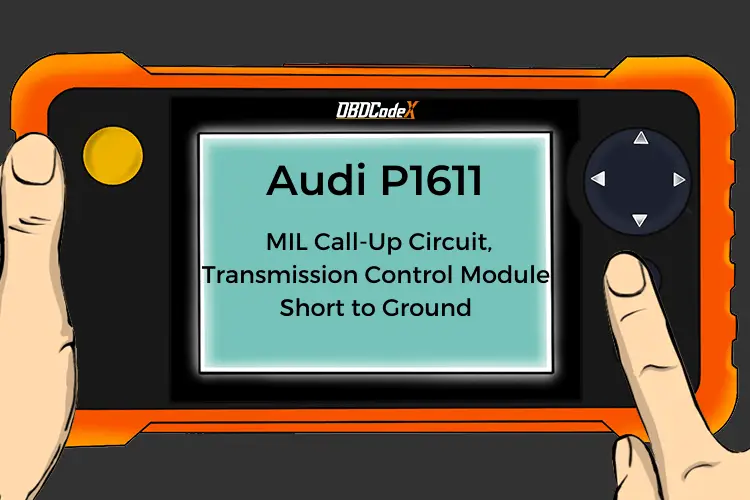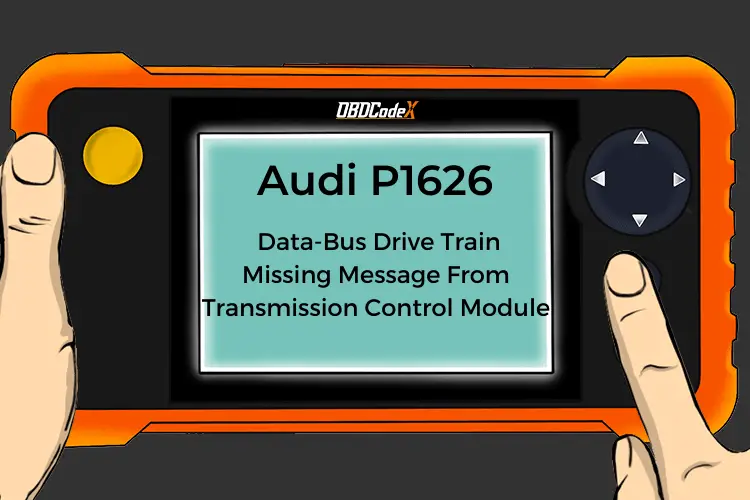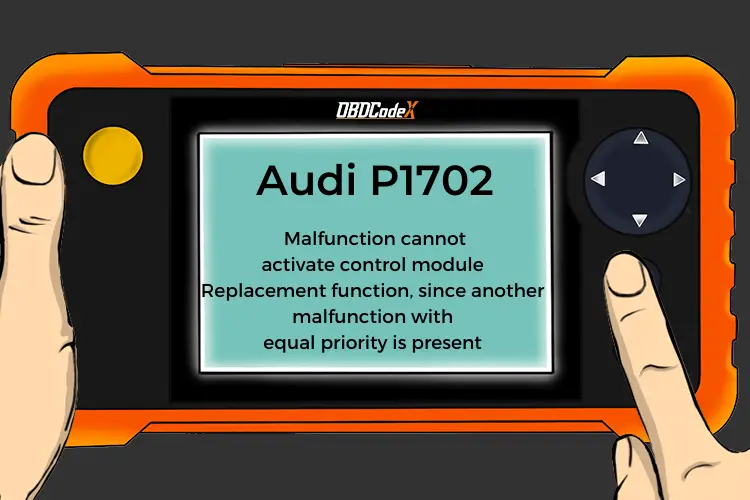P0737: TCM Engine Speed Output Circuit
Is your scanner showing P0737?
No worries. We'll show you what it means and how to deal with it.
P0737: TCM Engine Speed Output Circuit
OVERVIEWWhat Does The P0737 Code Mean?
The TCM (Transmission Control Module) works similarly to the ECM (Engine Control Module) in that, it monitors, controls and regulates the functions of the transmission where the ECM does the same for the engine.
The TCM uses various sensors and switches as well as the ECM to monitor, control and regulate the drivability of the transmission. In particular, The TCM uses an Engine Speed Sensor (ESS) to determine shift points among other functions. Just like the name implies, the ESS monitors the speed of the engine. Other names for the ESS may be CKP (Crankshaft Position Sensor) or OSS (Output Speed Sensor).
Most times, it measures the speed of the crankshaft using a hall effect type sensor. The sensor uses notches in the flywheel that pass through the sensor to monitor the position of the crankshaft. It is imperative that the ECM and TCM have an accurate reading here as it influences among other things: Shift points, Speed, Drivability etc.
The ECM activates P0737 and associated codes when it monitors one or multiple conditions outside a specific electrical range within the Engine Speed Sensor or it’s circuit. Given the nature of the code and the location of the sensor, I would say most times this would be an electrical issue. Specific mechanical issues may cause this code but I would say they are somewhat rare.
P0737 TCM Engine Speed Output Circuit code is set when the ECM monitors a general malfunction or an open circuit within the Engine Speed output circuit(s).
What Are The Symptoms Of The P0737 Code?
Symptoms of a P0737 trouble code may include:
- Hard shift
- Fuel mileage drop
- No start
- Low speed
- Engine stalling/bucking
- Inaccurate speedometer
- Less throttle response
What Are The Potential Causes Of The P0737 Code?
Causes for this P0737 transmission code may include:
- Defective Engine Speed Sensor (ESS)
- Defective ECM (Engine Control Module)
- Defective TCM (Transmission Control Module)
- Wiring issue
- Dirty pickup on the ESS
- Connector problem
How Serious Is This P0737 Code?
I would say severity here would be low. Obviously, this depends on the specific situation but in general, this fault will only cause drivability issues. That being said, prolonged use with this fault may cost you in the long run so make sure to keep an eye on it.
How Can You Fix The P0737 Code?
Be sure to check for technical service bulletins (TSBs) for your vehicle. Getting access to a known fix can save you time and money during diagnosis.
Tools
Some of the things you may need when diagnosing or repairing engine speed output circuits and systems:
- OBD code reader
- Multimeter
- Basic socket set
- Basic ratchet and wrench sets
- Basic screwdriver set
- Battery terminal cleaner
- Service manual
Safety Tips
- Let engine cool
- Chalk wheels
- Wear PPE (Personal protective equipment)
NOTE: ALWAYS verify and record the integrity of your battery and charging system before further troubleshooting.
Basic Step #1
If your car’s engine cranks fine but does not start, it may indicate a problem within the ESS (Engine Speed Sensor) itself. Test the sensor using desired electrical values from the manufacturer. Repair or replace accordingly. Typically speaking, these sensors read the speed of the crankshaft so it would most likely be mounted somewhere on the engine block.
Basic Step #2
Check your fluids. Make sure to check the automatic transmission fluid. Making sure it is clean and full. Top up as necessary. Low fluid can cause automatic transmissions to do funny things , so keep on it! Black or extremely dark transmission fluid , will need to be replaced to ensure proper transmission function. Not only can low and/or dirty transmission fluid cause this code to be activated, but may cause further damage to internal transmission components. Which is one of the most expensive repairs in the business so ensure good clean fluid is present.
NOTE: Always use transmission fluid recommended by the specific manufacturer for your make and model. A mistake here, can potentially cost thousands. Do your research!
Basic Step #3
Check the wiring. Given the location of the ESS, the wires are exposed to the elements and road debris. Inspect for any damage to the harness. There may be chafing occurring if the harness is routed close to the engine and other sharp components. Repair and damaged wiring.
NOTE: Refer to your service manual to make sure you properly identify the desired wiring harness.
Basic Step #4
Clean the sensor. It may be fairly simple to remove the ESS. In this case, remove sensor from the engine block. Inspect the sensor’s pickup, after all, these are magnetic and are extremely susceptible to picking debris/shaving which can potentially alter the electrical readings. Reinstall sensor once cleaned and free of debris.
Basic Step #5
Inspect the TCM (Transmission Control Module). I’ve seen these mounted directly to the transmission a lot of times. This means that this electrical module is exposed to some harsh conditions. All that being said, take a peek for any signs of corrosion, damage and/or any kind of defect.
Recommended Parts
Below are some recommended auto parts to help you address the trouble code affecting your vehicle and get it running smoothly again:
>>> Engine Speed Sensor
>>> Twippo 372Pcs Waterproof Wire Connectors Kit
>>> TCM
>>> ECU
>>> Autel Scanner MaxiCOM MK808S
>>> KAIWEETS Digital Multimeter
>>> DEWALT Socket Set
>>> Amazon Basics Flexible Ratcheting Wrench Set
>>> Amartisan 10-Piece Magnetic Screwdrivers Set
>>> NOCO E404 12.25 Oz Battery Terminal Cleaner
Note: During the purchasing process, please check carefully whether the part you want to buy fits your car!
Reference Sources
P0737 TCM Engine Speed Output Circuit, OBD-Codes.




